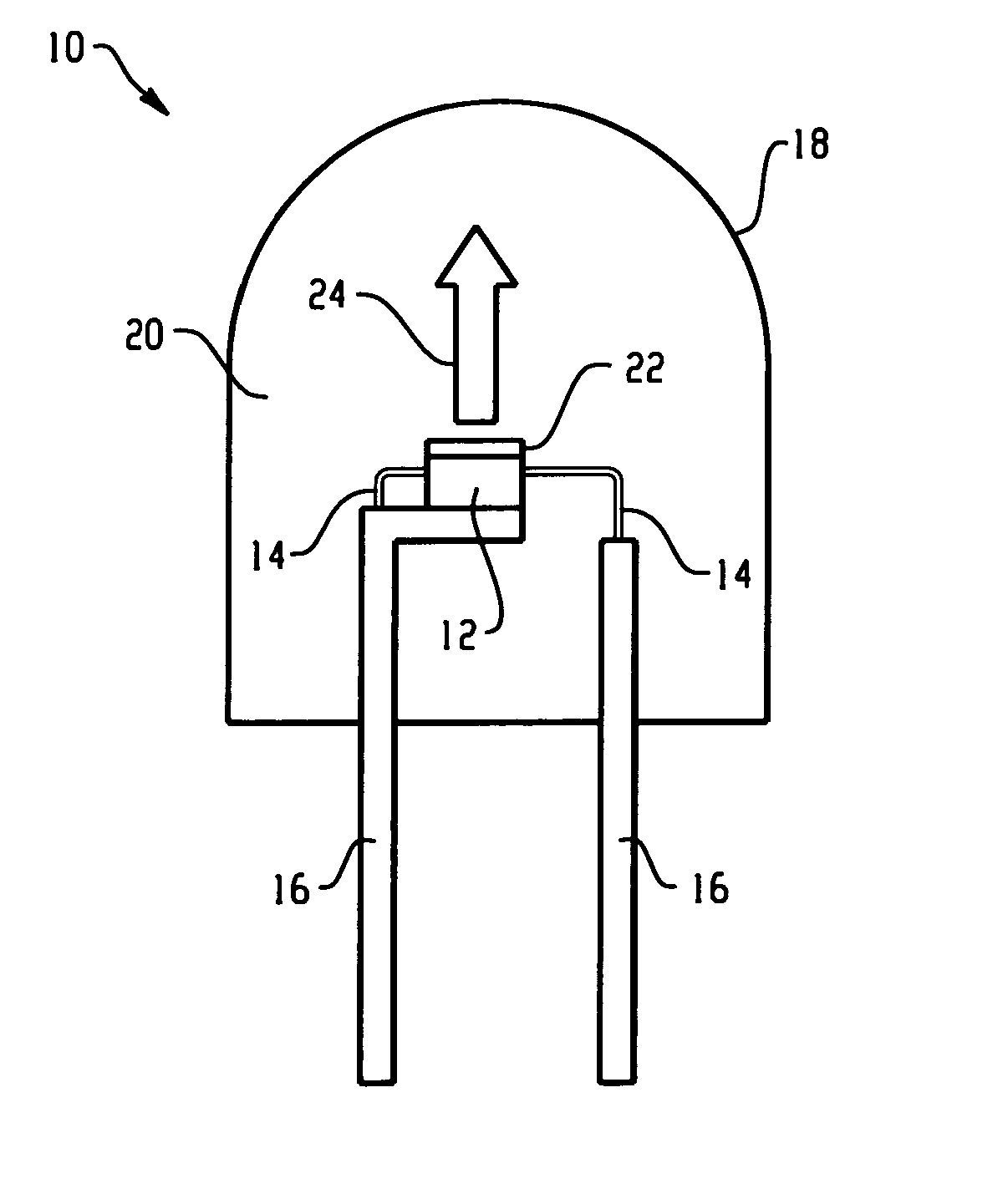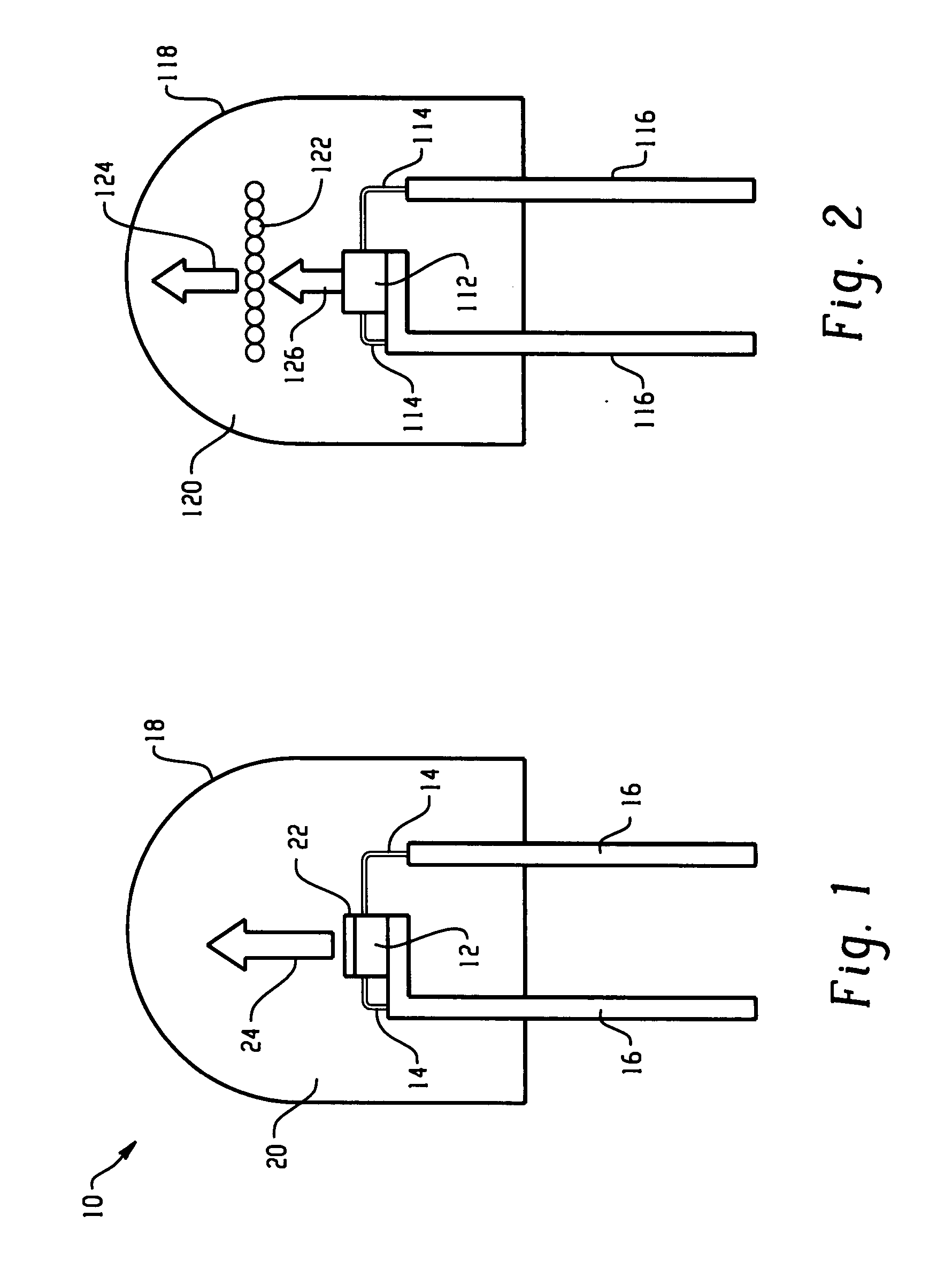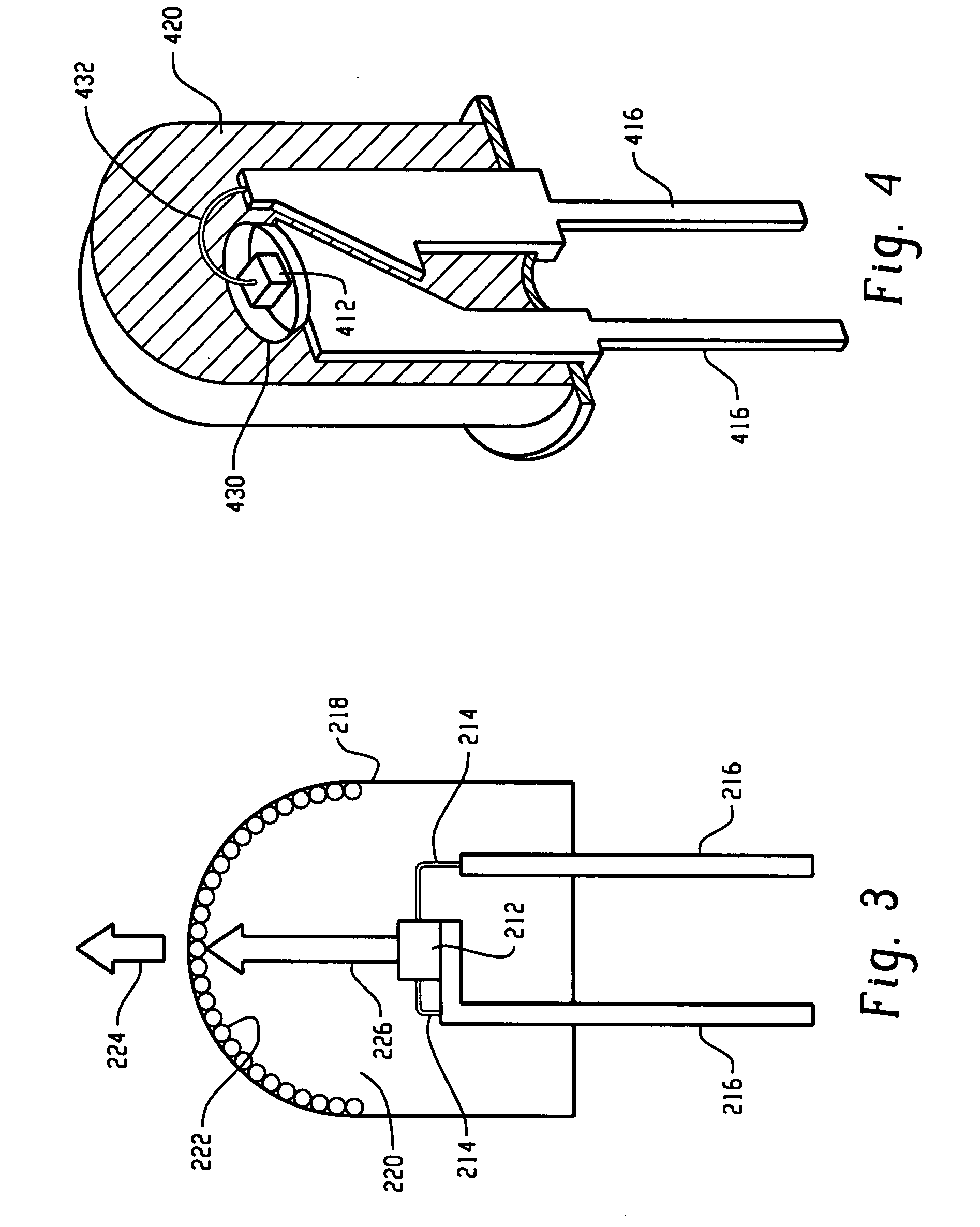White light LED devices with flat spectra
a technology of led devices and white light, applied in the field of phosphor blends, can solve the problems of inability to meet the needs of lighting use, deficient in certain regions of the visible spectrum, and inacceptabl
- Summary
- Abstract
- Description
- Claims
- Application Information
AI Technical Summary
Benefits of technology
Problems solved by technology
Method used
Image
Examples
examples
[0066] Light sources using phosphor blends according to the above embodiments may be produced. Various exemplary prophetic trials, blend spectra and device spectra are presented. The phosphors used in these trials and experimental data were (Sr,Ca,Ba)5(PO4)3Cl:Eu2+ (“SECA”); (Ba,Ca)5(PO4)3Cl:Eu2+ (“BECA”); (Ba0.65Sr0.20Ca0.10Eu0.05)2SiO4 (“BOS”), Sr1.66Ca0.30Eu 0.04Si0.96O3.92 (“SASI”) and Ca0.88Li0.1Eu0.02Si1.1Al0.9N3 (“CALI”).
[0067] A method of making a phosphor blend and a lighting device comprising said blend such that an emission of the lighting device has an emission intensity conformance at least in a defined spectral region to within ±20% or better to a reference CIE illuminant is detailed further below. This method can be used whenever more than 3 phosphors are needed to achieve the requisite conformance outlined earlier. The method consists in pre-blending phosphors with similar peak wavelengths, preferably no more than 2 at a time, in order to obtain a blue, a green and ...
PUM
 Login to View More
Login to View More Abstract
Description
Claims
Application Information
 Login to View More
Login to View More - R&D
- Intellectual Property
- Life Sciences
- Materials
- Tech Scout
- Unparalleled Data Quality
- Higher Quality Content
- 60% Fewer Hallucinations
Browse by: Latest US Patents, China's latest patents, Technical Efficacy Thesaurus, Application Domain, Technology Topic, Popular Technical Reports.
© 2025 PatSnap. All rights reserved.Legal|Privacy policy|Modern Slavery Act Transparency Statement|Sitemap|About US| Contact US: help@patsnap.com



